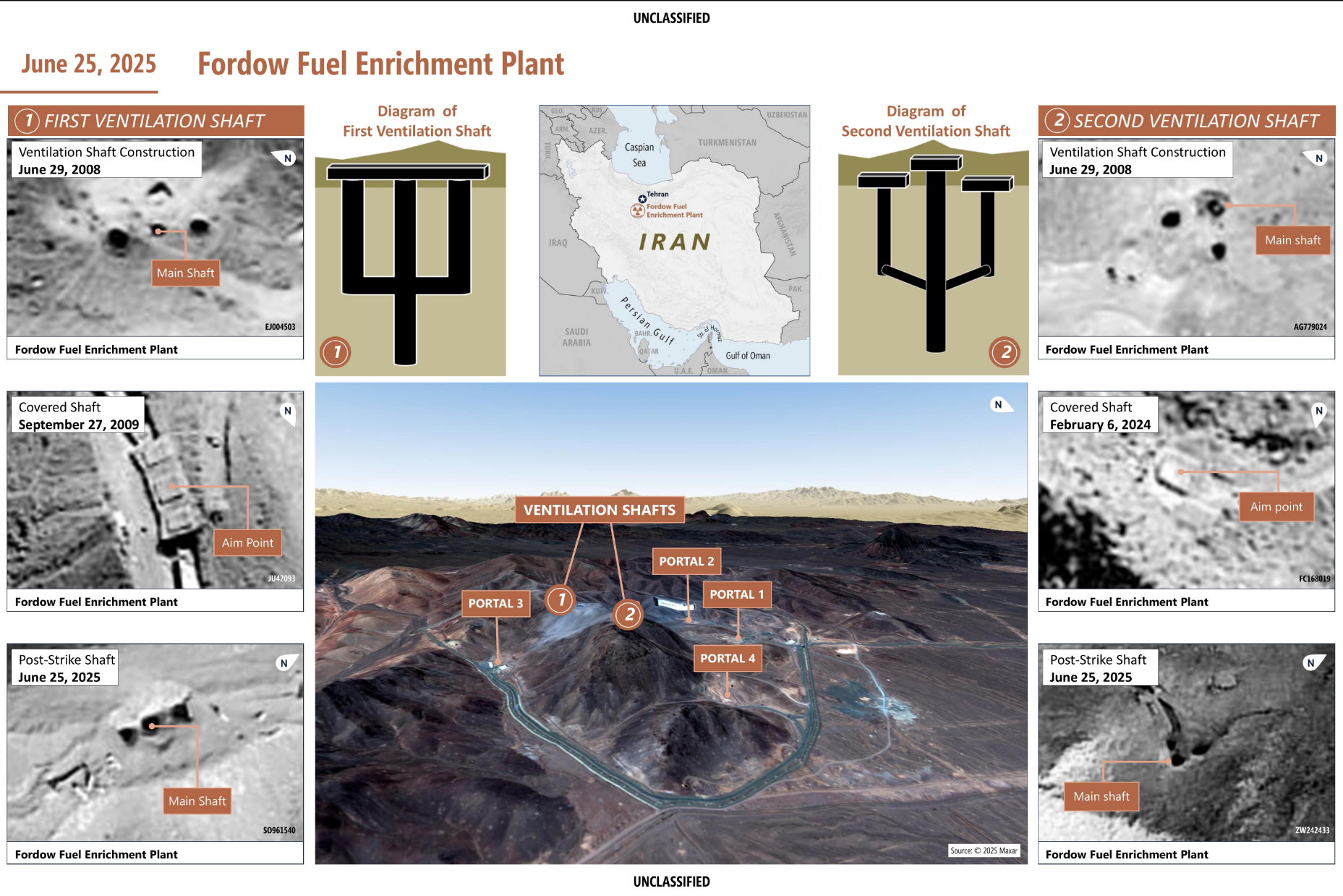The U.S. strikes on Iranian nuclear facilities were the product of nearly two decades of careful, secret planning, Chairman of the Joint Chiefs of Staff Gen. Dan Caine told reporters Thursday.
Caine laid out how two unnamed agents in Defense Threat Reduction Agency (DTRA) patiently gathered intel on the Fordow nuclear facility over the course of 15 years, culminating in targeted strikes down two ventilation shafts with purpose-made “bunker buster” bombs on June 21. Numerous U.S. and Israeli officials have insisted that the strikes did considerable damage to Iran’s nuclear capabilities, despite a leaked low-confidence preliminary intel report that was referenced in a Wednesday CNN story suggesting minimal damage to the sites.
“DTRA is the world’s leading expert on deeply buried underground targets,” Caine said during the briefing. “For more than 15 years, this officer and his teammate lived and breathed this single target Fordow, a critical element of Iran’s covert nuclear weapons program.”

A diagram of Fordow Nuclear Site shown to reporters during a Pentagon press briefing June 26, 2025. (Screenshot/DOD)
Caine said the two DTRA operatives began their observations in 2009, cataloguing every aspect of the Fordow nuclear site, including its electrical and environmental systems, overall layout and all inbound and outbound traffic. The two operatives were working in near total secrecy, telling next to no one their mission over the two decades.
“They literally dreamed about this target at night when they slept,” Caine said during the briefing.
After gaining the necessary intel, the two operatives worked with munitions experts to develop a bomb capable of destroying the nuclear sites. The end product was the GBU-57, which after tireless testing, became the choice method used during the strikes, with seven B-2 stealth bombers dropping 14 total bombs on Fordow and Natanz nuclear sites.
Two ventilation shafts were selected as the best targets to deliver any potential payload, as they represented critical weak points to the Fordow site. Caine said the weapons were delivered on target with their mission-specific parameters programmed into each bomb prior to the mission.
Caine noted that the Iranians attempted to protect the ventilation shafts by plugging them with concrete before the attack, but each cap was blown away by a preliminary GBU-57, with the rest of the payload following close behind.
“Operation Midnight Hammer was the culmination of those 15 years of incredible work,” Caine said during the briefing. “The air crews, the tanker crews, the weapons crews that built the weapons, [and] the load crews that loaded it.”
Defense Secretary Pete Hegseth joined Caine in the briefing, praising the pilots and all involved in the operation while lambasting the media for “irresponsible” reporting on a leaked intel report that claimed the strikes did minimal damage to the nuclear sites.
All republished articles must include our logo, our reporter’s byline and their DCNF affiliation. For any questions about our guidelines or partnering with us, please contact [email protected].
DONATE TO BIZPAC REVIEW
Please help us! If you are fed up with letting radical big tech execs, phony fact-checkers, tyrannical liberals and a lying mainstream media have unprecedented power over your news please consider making a donation to BPR to help us fight them. Now is the time. Truth has never been more critical!
Success! Thank you for donating. Please share BPR content to help combat the lies.
We have no tolerance for comments containing violence, racism, profanity, vulgarity, doxing, or discourteous behavior. Thank you for partnering with us to maintain fruitful conversation.




![Man Arrested After Screaming at Senators During Big Beautiful Bill Debate [WATCH]](https://www.right2024.com/wp-content/uploads/2025/06/Man-Arrested-After-Screaming-at-Senators-During-Big-Beautiful-Bill-350x250.jpg)












